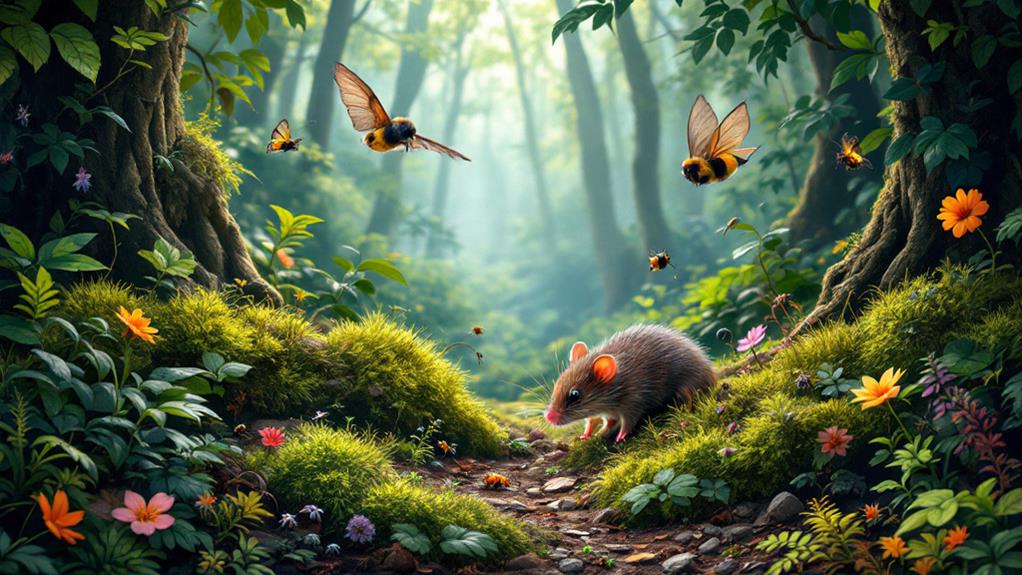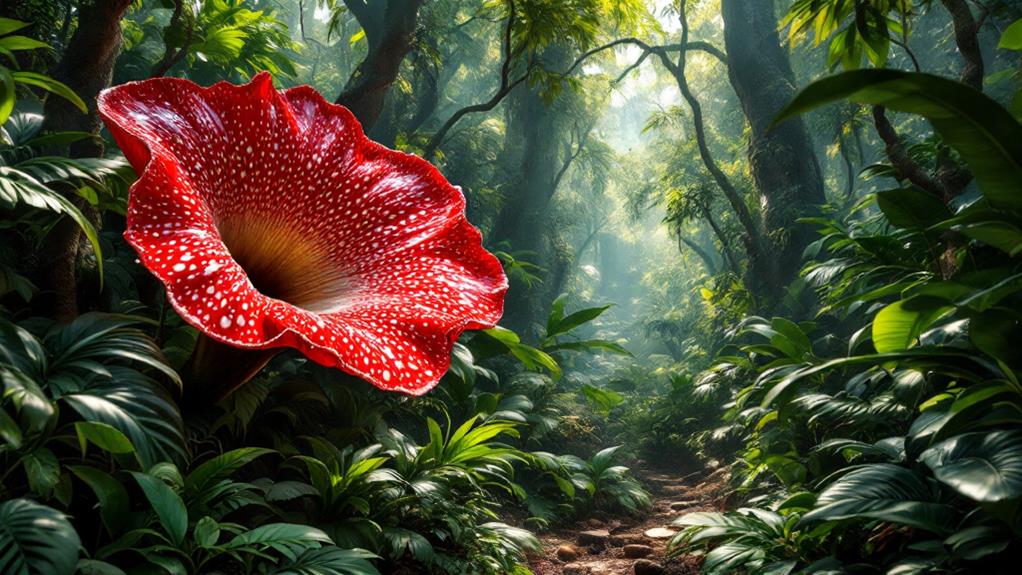The Largest Creatures on the Planet: Giants of the Animal Kingdom
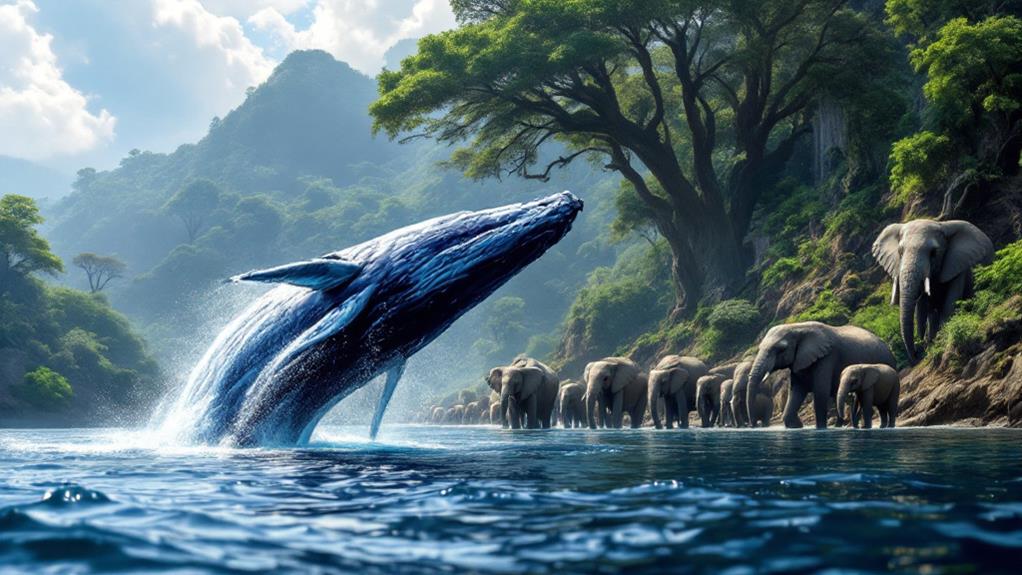
You're about to meet the giants of the animal kingdom! Blue whales, the planet's largest creatures, stretch up to 100 feet long and grace the ocean depths. On land, African elephants impress with their enormous size and complex social lives. Giraffes, the tallest animals, tower over the savannah with their long necks. In contrast, saltwater crocodiles dominate as the largest reptiles, known for their deadly hunting tactics. Meanwhile, whale sharks calmly glide through warm waters, showcasing their gentle nature. Curious about the colossal squid or imposing polar bears? There's much more to investigate about these fascinating giants!
Blue Whales: Ocean Titans
Dominating the vast expanses of the ocean, blue whales are truly the titans of the sea. When you think about their immense size, it's astounding they glide so gracefully through the water. But there's more to these gentle giants than just their size. Blue whale communication is a fascinating aspect of their lives. They use low-frequency vocalizations to communicate across vast ocean distances. These sounds can travel hundreds of miles underwater, allowing them to stay in touch with one another even when separated by the great blue depths.
Blue whale migration is another remarkable feature of their existence. Each year, they undertake extensive expeditions, moving from their cold feeding grounds in polar regions to warmer breeding areas near the equator. This migration is not just a simple south-to-north trek; it's a complex pattern that reflects their needs for food and reproduction. You can imagine the challenges they face during these long travels, maneuvering through changing ocean conditions and human threats.
Understanding these aspects of blue whale life gives you insight into the extraordinary nature of these ocean titans. Their communication and migration are key to their survival and are truly wondrous phenomena of the natural world.
African Elephants: Land Giants
Just as the vast oceans host their titans, the African savannahs are home to their own colossal beings: African elephants. These magnificent creatures are the largest land animals on Earth, and their size is matched by their complex social structures and intelligence. Elephant socialization is intricate, with matriarchal herds forming tight-knit family units. You'll find that they communicate using a variety of vocalizations and even low-frequency rumbles that can travel miles.
However, African elephants face numerous conservation challenges. Poaching for ivory and habitat destruction has drastically reduced their numbers. It's essential to address these issues to preserve these land giants for future generations. To understand these remarkable animals, consider:
- Diet: They consume up to 300 pounds of vegetation daily.
- Habitat: Prefer diverse habitats, including savannahs, forests, and marshes.
- Lifespan: Can live up to 70 years in the wild.
- Reproduction: Females give birth every 4-5 years after a 22-month gestation.
- Memory: Known for exceptional memory, aiding in migration and survival.
Giraffes: Towering Herbivores
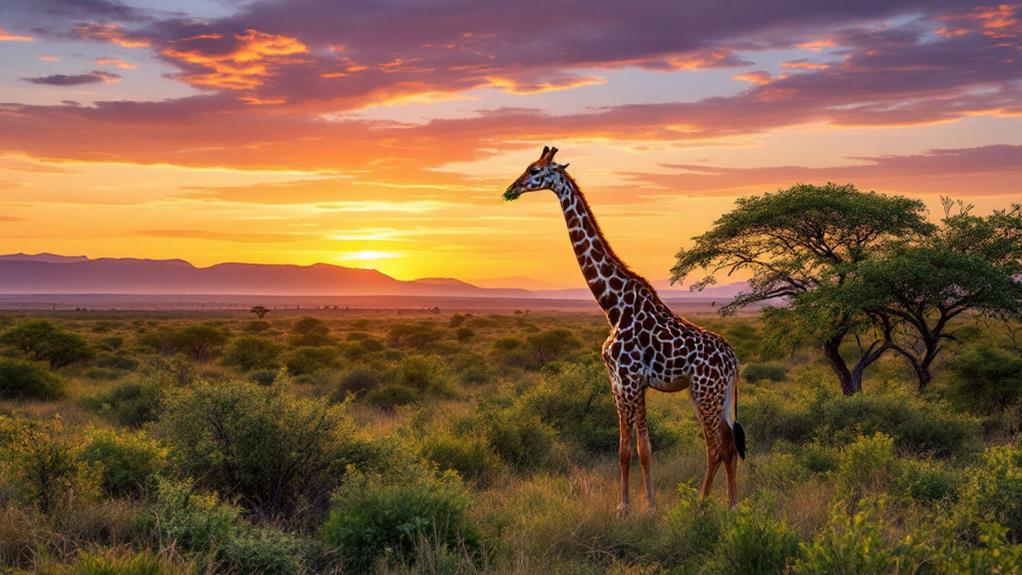
Among the towering giants of the animal kingdom, giraffes stand out with their unparalleled height and elegant grace. These majestic creatures are not only the tallest land animals but also fascinating examples of adaptation. Their elongated necks and legs allow them to reach treetop leaves, their primary food source. You'll find giraffes in the savannas, grasslands, and open woodlands of Africa. Their habitat provides the perfect setting for their browsing lifestyle, with acacia trees often serving as their dining tables.
Observing giraffe behavior reveals intriguing social dynamics. Giraffes typically form loose groups called towers, though they're not strongly bonded like some other herd animals. You might notice a giraffe's gentle demeanor as they interact with each other, using their long necks in a behavior known as "necking" to establish dominance among males. Despite their peaceful appearance, they're capable of powerful kicks to defend against predators.
It's remarkable how their unique adaptations and behaviors allow giraffes to flourish in their natural habitat. As you watch these towering herbivores move with deliberate grace, you can't help but marvel at their role in Africa's diverse ecosystem.
Saltwater Crocodiles: Reptilian Behemoths
In the domain of the animal kingdom's giants, saltwater crocodiles command respect with their immense size and formidable presence. As the largest of all living reptiles, these behemoths thrive in a saltwater habitat, primarily found in regions stretching from Southeast Asia to northern Australia. Their ability to adapt to both freshwater and saltwater environments makes them unique among crocodilians.
Understanding crocodile behavior is essential when you're exploring their world. These apex predators employ stealth and patience, often lurking just beneath the water's surface, waiting for the perfect moment to strike. Their diet is varied, including a range of prey from fish to mammals, even other reptiles.
Here's what makes saltwater crocodiles fascinating:
- Physical Size: They can grow up to 23 feet long and weigh over 2,200 pounds.
- Lifespan: They can live for more than 70 years in the wild.
- Hunting Strategy: They use a 'death roll' technique to subdue prey.
- Territorial Nature: They fiercely defend their territory against intruders.
- Vocal Communication: They communicate with a series of growls and hisses.
These remarkable creatures are a reflection of nature's ability to produce awe-inspiring giants that command not only attention but also respect.
Colossal Squid: Deep Sea Mysteries
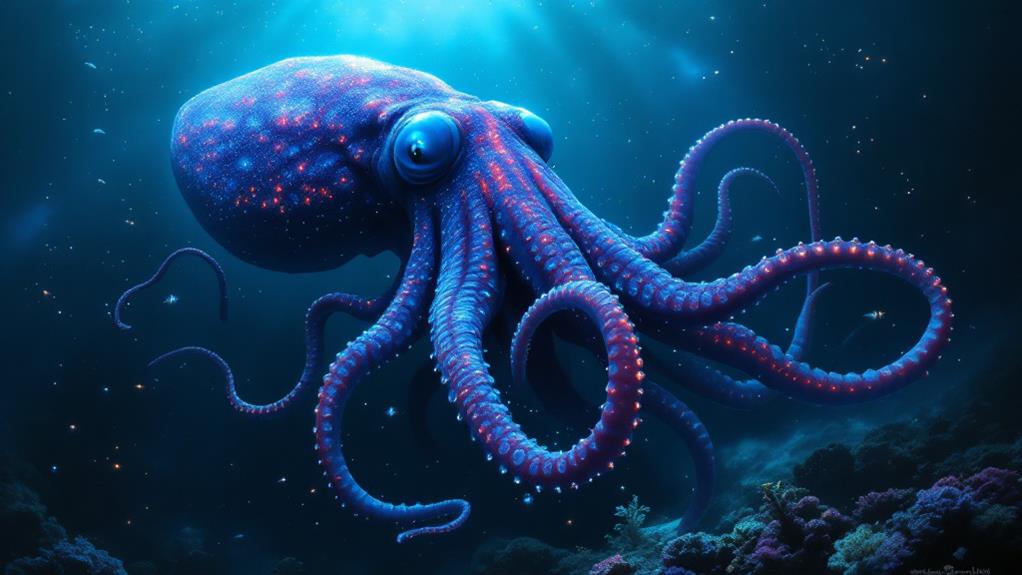
Few creatures capture the imagination like the colossal squid, a true enigma of the deep sea. Living in the icy waters of the Southern Ocean, this mysterious giant inhabits a world where sunlight barely penetrates. The colossal squid habitat is as elusive as the creature itself, stretching from the depths near Antarctica to the chilly waters off New Zealand. In these extreme environments, the colossal squid has developed remarkable adaptations to survive.
You'd be amazed by the colossal squid adaptations that allow it to thrive in such a harsh habitat. Its massive eyes, some of the largest in the animal kingdom, help detect faint light and elusive prey in the dark ocean depths. The squid's limbs are lined with sharp hooks, a formidable tool for capturing prey like fish and other squids. These adaptations showcase the creature's evolutionary prowess, honed over millions of years.
In the deep sea, where pressures are immense and temperatures frigid, the colossal squid's body structure allows it to withstand these harsh conditions. Its gelatinous tissue is perfectly suited for the cold, high-pressure environment, making it one of the most fascinating giants lurking beneath the waves.
Polar Bears: Arctic Giants
While the deep sea hosts giants like the colossal squid, the icy expanse of the Arctic is home to another formidable giant—the polar bear. As you investigate the Arctic, you'll uncover that the polar bear's impressive size is matched by its unique adaptations to one of the planet's harshest environments. Their thick fur and a layer of blubber provide vital insulation against freezing temperatures. Polar bears have evolved large paws, perfect for distributing weight and preventing them from sinking into the snow.
Understanding polar bear behavior is fundamental to appreciating these Arctic giants. They are primarily solitary creatures, except during mating season or when a mother raises her cubs. Their survival depends on their ability to hunt seals, which requires patience and stealth.
Here are some fascinating aspects of their adaptations:
- Keen sense of smell: Detects seals nearly a mile away.
- Powerful swimmers: Can cover vast distances in icy waters.
- Camouflaged fur: Blends with the snowy environment, aiding in hunting.
- Efficient metabolism: Conserves energy during fasting periods.
- Strong maternal instincts: Guarantees cubs' survival in harsh conditions.
These adaptations make polar bears true giants of the Arctic, perfectly designed for their frozen domain.
Whale Sharks: Gentle Giants
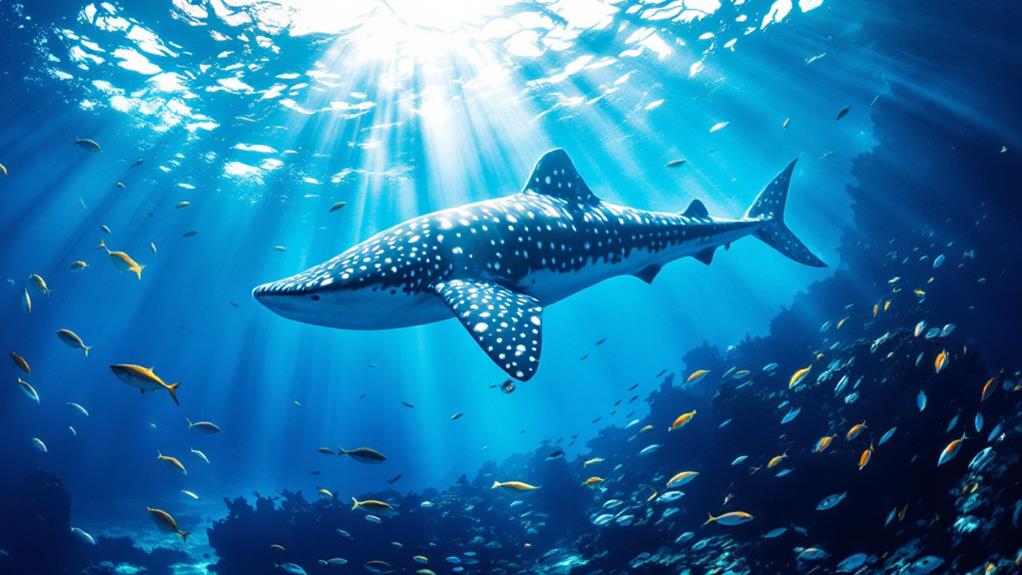
Whale sharks, the largest fish in the ocean, captivate with their gentle nature and impressive size. Imagine swimming alongside these colossal creatures, and you'll witness their serene, slow-moving grace. Unlike many other giants of the sea, whale sharks pose no threat to humans. Their diet mainly consists of plankton and small fish, which they filter through their massive mouths. Observing whale shark behavior offers a glimpse into their peaceful existence as they glide through warm waters around the globe.
Despite their gentle demeanor, whale sharks face numerous threats, making whale shark conservation essential. Human activities like fishing, boat strikes, and habitat destruction have greatly impacted their populations. As you explore deeper into understanding these magnificent creatures, you'll realize the importance of efforts to protect them. Conservation organizations work tirelessly to guarantee their survival, focusing on research, awareness, and habitat protection.
